Monday 2 March 1942
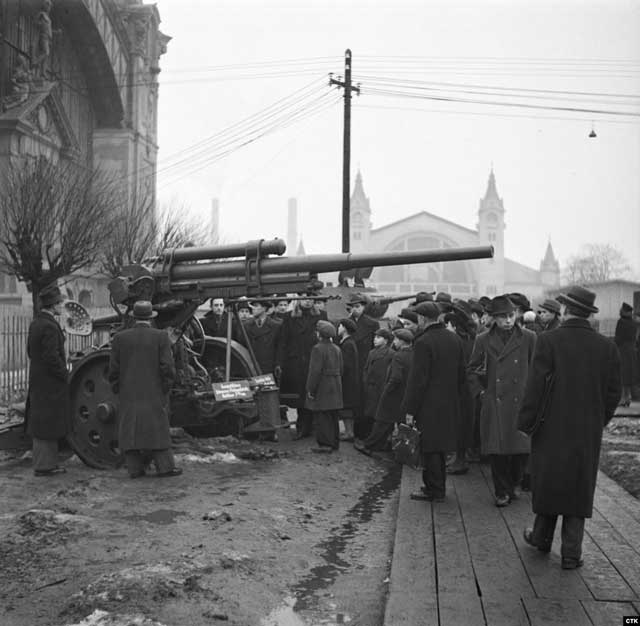 |
| Prague citizens inspect a Soviet artillery piece at an exhibit depicting life in the Soviet Union, March 1942. |
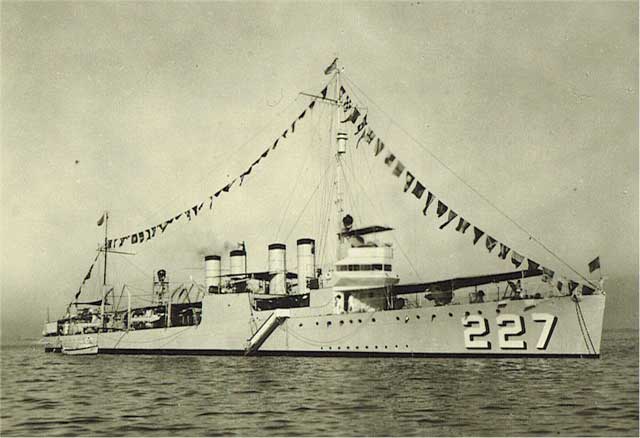 |
| USS Pillsbury, sunk by Japanese cruisers on 2 March 1942. |
 |
| HMS Stronghold, sunk south of Java on 2 March 1942. |
- 9505-ton Dutch freighter Tjikarang
- 1030-ton Dutch freighter Van Diemen
- 1281-ton Norwegian freighter Tunni
- 7970-ton Dutch freighter Tjikandi
- 1615-ton Canadian freighter Shinyu
- 1799-ton Dutch freighter Sinabang
- 2232-ton Norwegian freighter Prominent
- 322-ton Dutch tanker Milo
- 5400-ton Dutch freighter Koning der Nederlanden
- 340-ton Dutch tanker Kasuaris
- 482-ton Dutch lightship J.H. Menten
- 175-ton Dutch auxiliary minesweeper Endeh (HMV-18, sunk by gunfire south of Java)
- 6924-ton Dutch freighter Bengalen
- 1330-ton Dutch freighter Belawan
- 1053-ton Dutch freighter Benkalis
- 43-ton Dutch tug Dann
- 4323-ton Dutch freighter Liran
- 1865-ton Dutch freighter Loa Koeloe
- 2464-ton Dutch freighter Meroendoeng
- 57-ton Dutch coaster Pehe
- 1793-ton Dutch freighter Silindoeng
- 172-ton Dutch freighter Tamako
- 172-ton Dutch tug Taroena
- 344-ton Dutch tanker Tembusu
- 3545-ton Dutch freighter Sisunthon Nawa
- 620-ton Royal Navy minesweeper HMS Harley
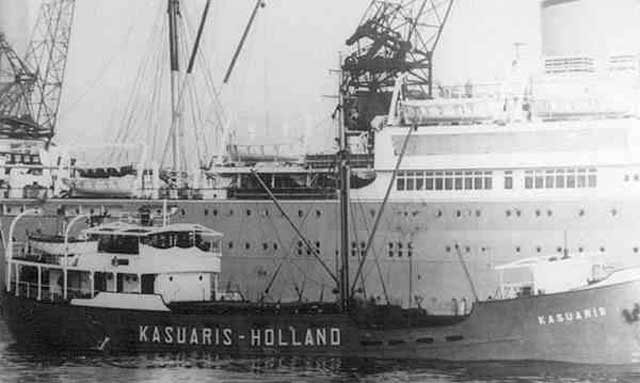 |
| Dutch freighter Kasuaris (in the foreground), scuttled on 2 March 1942. |
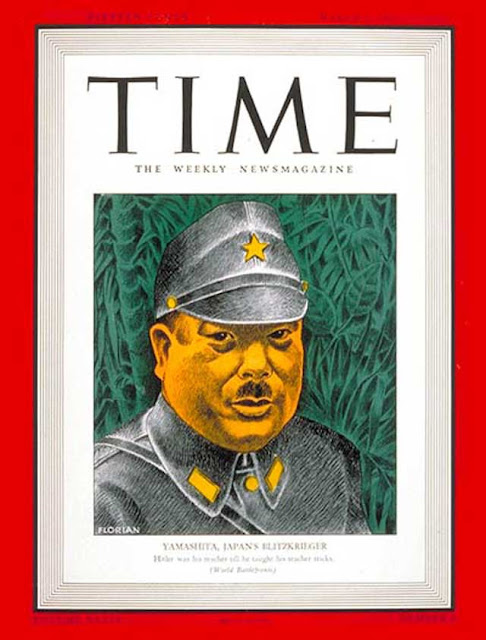 |
| Time magazine, 2 March 1942, features General Yamashita on the cover |
In Burma, Japanese forces continue moving toward Rangoon. While the defending British and Indian forces have established a roadblock on the main road at Pegu with the 17th Indian Division, the Japanese simply leave the roads and bypass them through the jungle.
US Navy submarine USS Sailfish (SS-192) torpedoes and sinks Japanese aircraft transport Kamogawa Maru north of Lombok Strait. The ship is serving as a troop transport, and 273 troops perish along with 6 sailors (including Captain Shimizu) and 48 passengers.
At the Fuhrer Headquarters at Rastenburg, Adolf Hitler continues his unexpected leniency on allowing retreats. He approves a plan by General Schmidt of the Second Panzer Army to pull troops back from Belev in order to consolidate his lines. With the spring thaw (Rasputitsa) coming soon, operations are going to die down anyway.
European Air Operations: RAF Bomber Command sends four Boston bombers to attack shipping off Den Helder. All return safely.
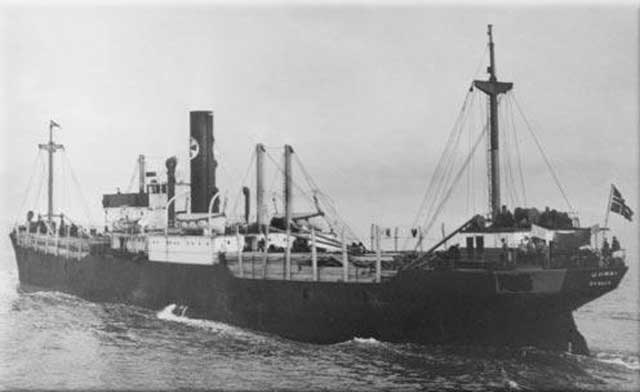 |
| Norwegian freighter Gunny, sunk on 2 March 1942. |
Battle of the Mediterranean: After dark, the RAF based on Malta sends Wellington bombers based at Luqa Airfield to attack Palermo Harbor, Sicily. This is the usual overnight stopping place for convoys sailing from Naples to Tripoli. The bombers drop 26 tons of bombs, damaging the dockyard area and a seaplane base. The bomber crews also claim to sink two ships of 9000 and 5000 tons and damage a third. The Luftwaffe, in terms, sends Junkers Ju 88 medium bombers to attack numerous places, including Grand Harbor, Lazaretto, Gudja, Safi Strip, Corradino, Cospicua, Zabbar, and Luqa Airfield.
Meanwhile, Royal Navy submarine HMS Turbulent (Cdr. J.W. Linton) has a big day near Thessaloniki, Greece. Commander Linton uses the deck gun to destroy three Greek two-masted schooners. These are 42-ton Chariklia, 250-ton Apostolos, and 45-ton Evangelistria. All three ships are ferrying German troops to their posts on the Aegean islands. The Apostolos' crew manages to beach the ship, but she never sails again. There are two deaths on the Apostolos, including one German soldier.
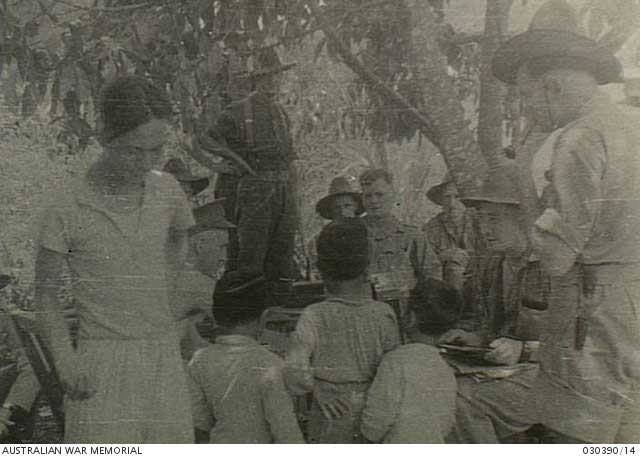 |
| "Tjampea, Java. March 1942. Members of the 2/2nd Australian Pioneer Battalion with young Javanese children in West Java after the action at Leuwiliang and prior to the battalion reaching Bandoeng." Australian War Memorial 030390/14. |
Australian/Thai Relations: Australia declares war on Thailand.
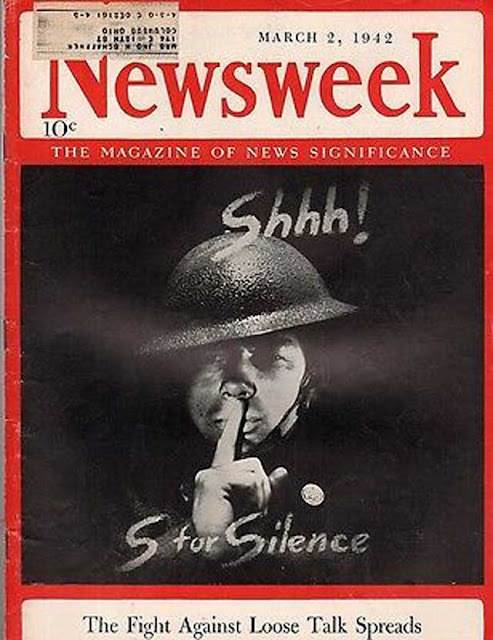 |
| Newsweek magazine, 2 March 1942, embraces the new paranoia about enemy spies. |
The U.S. Naval Air Transport Service begins regularly scheduled operations with an R4D Skytrain flight from NAS Norfolk, Virginia, to NRAB Squantum, Massachusetts.
Headquarters, 19th Bombardment Squadron (Medium), 22nd Bomber Group (Medium), transfers its headquarters from Brisbane to Ipswich, Australia.
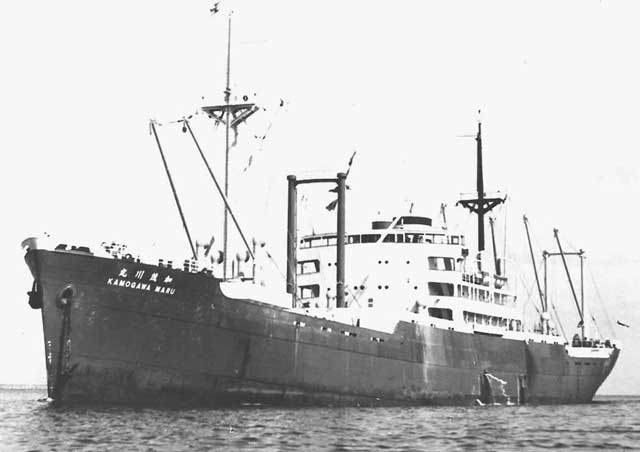 |
| Kamogawa Maru, sunk by USS Sailfish on 2 March 1942. |
Holocaust: German forces liquidate the Minsk Ghetto's nursery/ orphanage. They throw babies and older children into a pit and then bury them alive. According to at least one account, SS officer Wilhelm Kube and other officers throw candy to the shivering children before burying them. When "The Pit" murders are done, about 5000 victims have perished. There is a memorial to the incident at the spot.
Future History: John Winslow Irving is born in Exeter, New Hampshire. He develops an interest in writing and publishes his first novel, "Setting Free the Bears," in 1968. He continues publishing novels that don't receive much attention until "The World According to Garp" (1978), becomes an international bestseller and is made into a feature film directed by George Roy Hill and starring Robin Williams. After that, Irving enjoys great success and continues publishing novels to great acclaim. As of this writing, Irving continues publishing novels and winning writing prizes.
Lewis Allan Reed is born in New York City, New York. Reed develops a love for music and makes his first recording as a teenager. However, he also begins experiencing panic attacks and other mental issues. This does not stop Reed's musical development, and in 1964 he is signed as a songwriter by Pickwick Records. Living on the Lower East Side, Reed helps to form a new rock band, the Velvet Underground, under the name Lou Reed. This becomes a very influential rock group, though it never experiences that much commercial success. After the band breaks up in 1971, Reed moves back home to Long Island. He soon signs a recording contract with RCA Records and releases his first solo album, "Lou Reed." Reed continues recording and has a big hit, "Walk on the Wild Side." After that, Reed continues releasing material, though it is never as popular. Lou Reed passes away on Long Island on 27 October 2013.
 |
| Ginger Rogers, Academy Award winner in 1941, on the cover of Life magazine, 2 March 1942. |
March 1942
March 1, 1942: Second Battle of Java Sea
March 2, 1942: Huge Allied Shipping Losses at Java
March 3, 1942: Japan Raids Western Australia
March 4, 1942: Second Raid On Hawaii
March 5, 1942: Japan Takes Batavia
March 6, 1942: Churchill Assaults Free Speech
March 7, 1942: British Defeat in Burma
March 8, 1942: Rangoon Falls to Japan
March 9, 1942: Japanese Conquest of Dutch East Indies
March 10, 1942:US Navy attacks Japanese Landings at Lae
March 11, 1942: Warren Buffett's First Stock Trade
March 12, 1942: Japan Takes Java
March 13, 1942: Soviets Attack In Crimea Again
March 14, 1942: The US Leans Toward Europe
March 15, 1942: Operation Raubtier Begins
March 16, 1942: General MacArthur Gets His Ride
March 17, 1942: MacArthur Arrives in Australia
March 18, 1942: Japan Attacks In Burma
March 19, 1942: Soviets Encircled on the Volkhov
March 20, 1942: "I Shall Return," Says MacArthur
March 21, 1942: Germans Attack Toward Demyansk
March 22, 1942: Second Battle of Sirte
March 23, 1942: Hitler's Insecurity Builds
March 24, 1942: Bataan Bombarded
March 25, 1942: Chinese Under Pressure in Burma
March 26, 1942: Win Or Die, Vows MacArthur
March 27, 1942: The Battle of Suusari
March 28, 1942: The St. Nazaire Commando Raid
March 29, 1942: The Free Republic of Nias
March 30, 1942: Japanese-Americans Off Bainbridge Island
March 31, 1942: Japanese Seize Christmas Island
2020

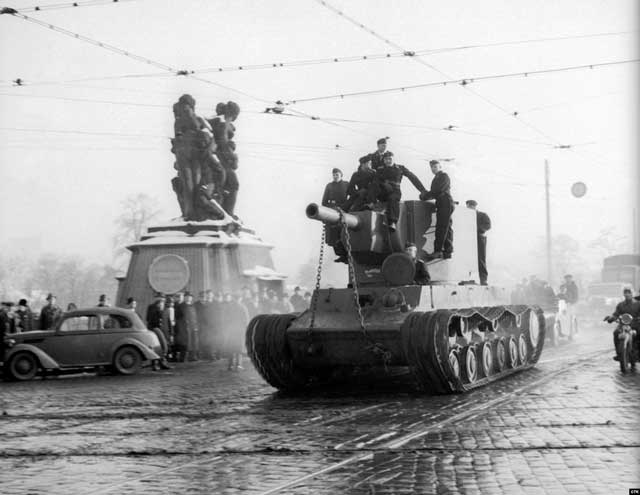

No comments:
Post a Comment